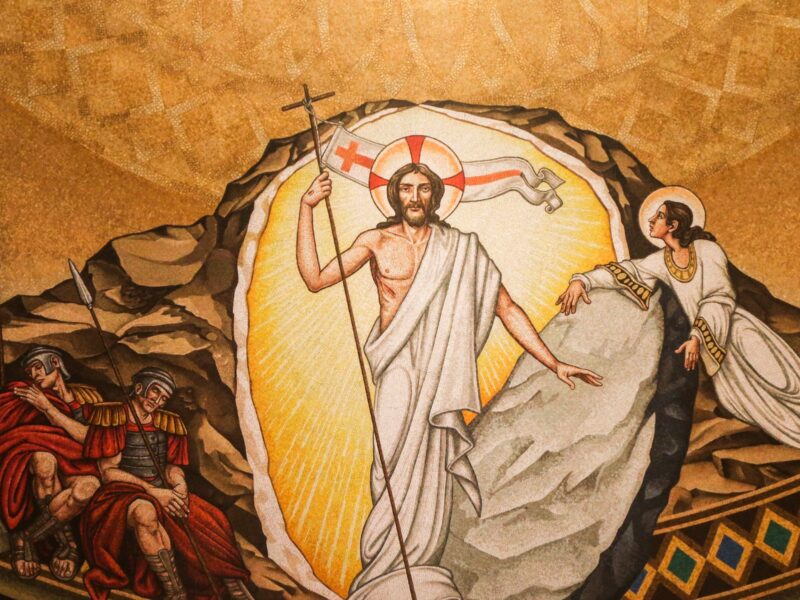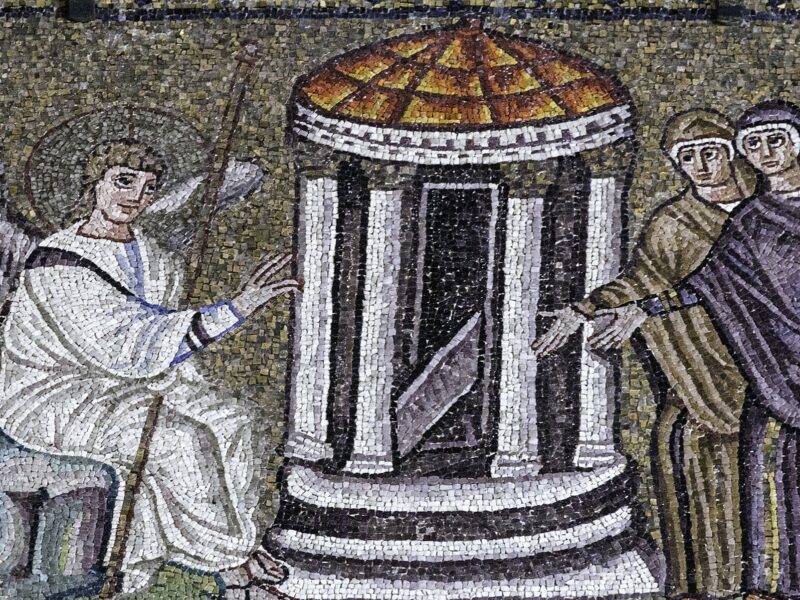
Light in the Darkness
Second Sunday of Lent (B) | Fr David Sanders reflects on the darkness of suffering and the hopeful light of the Transfiguration. 
Saint Peter must have felt relief by his experience of the Transfiguration. A few verses before in Mark’s Gospel he had really been deflated by Christ’s words to him. Why? Peter in a moment of revelation had publicly acknowledged that Jesus was the Messiah. And no doubt he had seen the implications of this announcement for himself. He could see himself as Christ’s right hand man in a thriving Kingdom of God. But then Jesus had added words which Peter did not want to hear. He prophesied that there would indeed be glory in a resurrection after three days but before this Jesus must suffer grievously through public rejection and death. Peter wanted the glory but not the suffering. And at this point Jesus corrects him severely, telling him he is a scandal and sees things from a purely human point of view not as God sees them.
Peter must have been confused by this put-down and probably dazed as he heard Jesus go on to say that only by being willing to lose your life will you save it. But then a few days later comes the Transfiguration and Peter’s relief. Jesus leads him and James and John up a high mountain. And now there is an even greater revelation. Jesus is transfigured and his clothes become a dazzling white, a symbol of divine glory. And there on the mountain talking to Jesus are the great prophetic figures of Israel, Moses and Elijah who according to some traditions did not die but were exalted to heaven. Now this this is what Peter was hoping for –an experience of heavenly glory separated from the miseries of earthly reality. We are told that the disciples are terrified but for Peter it may have been sort of ecstatic terror. He is beside himself with excitement.
It is as though he wants to capture this divine mountain-top experience in some kind of liturgical event, recalling a great feast like Tabernacles. This is really what Peter has been seeking but clearly he is not too sure what he is asking for when he says to Jesus ’Master let us make three tabernacles, one for you and one for Moses and one for Elijah.’ The Transfiguration is a powerful vision but it needs a word to interpret it; eye and ear must be opened so we can see and hear clearly. Finally the word comes in the voice of the Father as the cloud overshadows them.
There is no sharp separation between heavenly and earthly, between divine and human in Jesus. When he is transfigured the divine glory breaks out through his humanity. His body is transfigured. Jesus will save us through taking on the sufferings of the world not by separating himself from them. The glory will come for certain in the resurrection but first he will show a divine love in giving himself in sacrifice. And this is what the Father confirms from the cloud. ‘This is my beloved Son, listen to him.’ Jesus’ words will help Peter not only to understand the vision but the path of suffering which promises to bring life out of death.
They come down from the mountain top. As soon Jesus and the disciples are down to earth the sufferings of the world impinge. A father desperate for a cure for his dumb and epileptic son pleads with Jesus to help. He heals the boy. It is a sign that God’s kingdom is breaking through and pushing back Satan’s kingdom. Jesus continues his journey to Jerusalem. There his glory will be revealed not apart from his humanity but in weakness and pain as he hangs on the cross. As St Paul writes to the church at Corinth ‘we have been given the light of the glory of God in the face of Christ.’
Peter can help us on our Lenten journey. Most of us resist the prospect of suffering. We want to belong to Christ’s Church but we would prefer that it was a thriving community. But a thriving community in our modern world means the exclusion of suffering. It means being respected, possibly envied, and probably growing in numbers. After Pentecost when Peter received the Holy Spirit he was called to lead the Church. At first glance it looks as though the story of the Church in the Acts of the Apostle is one of success; it gets bigger and better. It is a thriving community. But Peter found very soon that thriving included suffering. The Holy Spirit drove Peter and then Paul to new missions but also into prison. But the Holy Spirit also gradually shaped their inward lives to conform to the pattern of Christ’s death and resurrection. A thriving Church may provoke and offend but it will certainly suffer.
Amidst the many worldwide sufferings of the Church today, which Lent tell us is part of the vocation of a Christian, the wonderful light of the Transfiguration shines in the darkness and reminds us as Paul discovered for himself ‘the sufferings of the present time are not worth comparing with the glory that is to be revealed to us.’
Photograph by Fr Lawrence Lew OP of a mosaic in the National Shrine of St John Paul II in Washington DC.
Sorry, the comment form is closed at this time.



A Website Visitor
Thank you fr. Sanders; God Bless all the Blackfriars of Oxford.